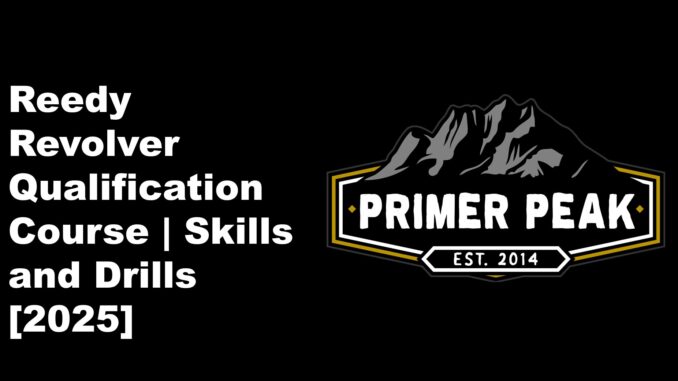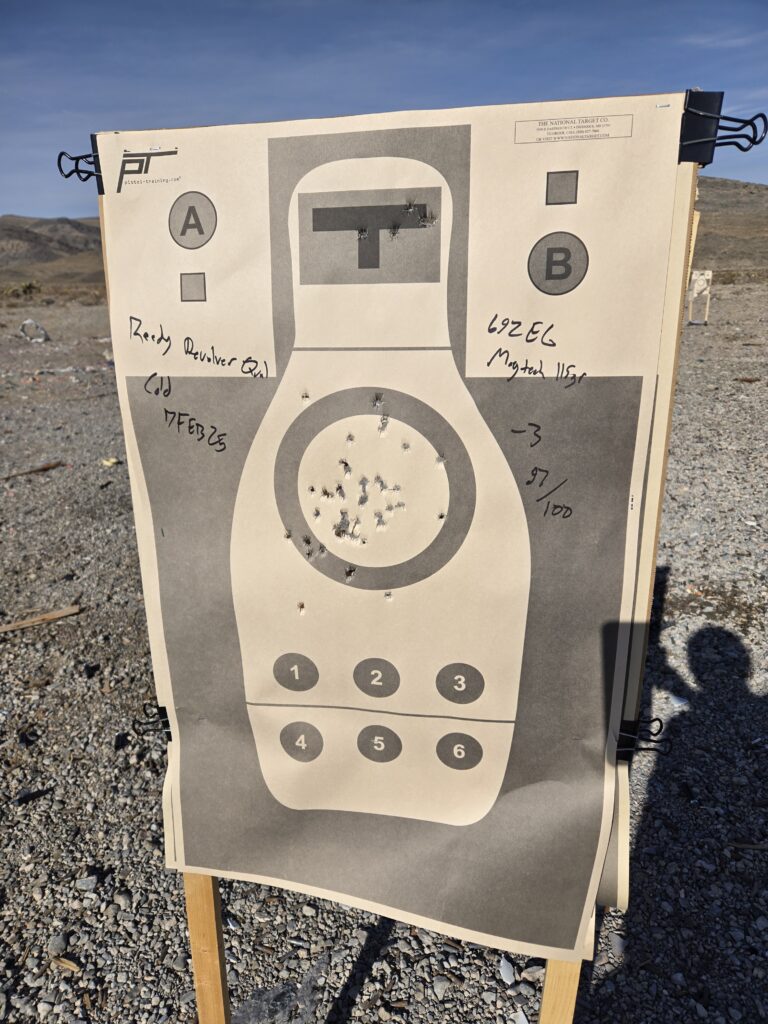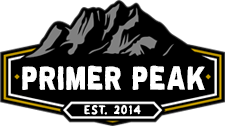
In late 2023 I attended the Rangemaster Professional Pistolcraft course. During this class several students and I began to discuss what we’d like to see in a dedicated “revolver instructor development course.” This conversation led me to start looking for shooting standards that I thought might fit the bill. Eventually this led to me to making my own course, to truly be what I would want to see in something like this.
Of course I’m not alone in this endeavor, and inspiration rarely comes from the unfamiliar. In designing this course of fire I borrowed heavily from Tom Givens. Those familiar with the basic Rangemaster Instructor Course may recognize the format of this course. Consider it a revolver-specific version of Tom’s basic qualification. Times, round counts, and stages are 6-shooter friendly, though others are welcome to participate.
Setting Up the Drill
Set up for this course of fire is fairly uncomplicated. Each shooter needs a single target, 25 yards of distance, a shot timer, a revolver, and 50 rounds of ammunition. At least one loading device is recommended, such as a speed loader. The target for this course is the Q-PT silhouette from National Target and Pistol-Training, however it can be substituted by targets such as the RFTS-Q5.
Shooting is designed around a 6-shot revolver, however the course can be completed with varying capacity, with some added challenge. Shooters will also need a holster, as several stages require a drawstroke. For those practicing on restrictive ranges, simply add the estimated time of your draw to your par times.
Scoring the Reedy Revolver Qualification Course
Scoring is very straight forward for my revolver qualification. Rounds landing in the “A-Zone” of the target are worth two points. These are indicated by the 8-inch circle in the chest, and the 3×5″ rectangle in the head. Rounds landing outside of those zones, while still inside the silhouette, are worth a single point. Anything missing the silhouette entirely are worth zero points. Additionally, rounds fired after the par times are worth zero points.
Shooters must achieve 90 points to pass at the “instructor” level.
Firing the Drill
This course of fire is shot from a mixture of low ready and from the holster, indicated by the string description. When shooting from low ready, place the muzzle no higher than the base of the target stand. Start signal is the beep of the timer.
- 3 Yards
- Draw and fire 2x rounds, freestyle. Par time 2.5 seconds. Repeat.
- Gun in hand at low ready, fire 2x rounds, strong hand only. Par time 2.5 seconds. Repeat.
- Gun in hand at low ready, fire 2x rounds, weak hand only. Par time 3 seconds. Repeat.
- 5 Yards
- Draw and fire 3x rounds, freestyle. Par time 3 seconds. Repeat.
- Draw and fire 2x rounds to the chest and 1x round to the head, freestyle. Par time 4 seconds. Repeat.
- Low ready, 1x round to the head, freestyle. Par time 1.5 seconds. Repeat twice. Do not reload after this stage.
- 7 Yards
- Low ready, 3 rounds total in gun. Fire 3x rounds, perform reload, then fire 3x more rounds, freestyle. Par time 10 seconds.
- Load cylinder with 5 rounds. Without looking, spin cylinder, then close on a random chamber. Fire 5x rounds with 6x trigger presses, simulating a failure to fire. Par time 6 seconds.
- 15 Yards
- Draw and fire 3x rounds, freestyle. Par time 6 seconds. Repeat once.
- 25 Yards
- Draw and fire 3x rounds standing, drop to kneeling, fire 3x rounds, freestyle. Par time 14 seconds.
My Results
I have shot this course of fire many times over nearly two years since initially developing it. With this in mind, I’ve had a variety of scores, and used a handful of revolvers to run through the qualification. Let’s take a look at a few examples covering a couple different types of guns and my results with them.

First we have a run on my revolver qualification with my S&W 632UC. This is a 6-shot J-Frame revolver chambered for 32H&R Magnum. Despite the small size, decent sights and a good trigger allowed me to pass with a 91% on my first attempt. One shot when a little high, which is not uncommon with the sights on this gun. I was a little surprised and very pleased with these results from such a small handgun. This was shot from AIWB with a Harry’s Holsters Icon 2.0 and an HKS speed loader.

Next is one of my early attempts of this course, back before I had made any mention of it in the public. This was done with my old S&W Model 15, and some 130gr Fiocchi FMJ loads. Once again, this was a pass, with the focus primarily being on time evaluations. This was shot from OWB strong side concealment under a coat in a Galco Combat Master with HKS speed loaders. A decent 94% comes fairly easily with a classic K-Frame, which is almost an exact replication of what this course is designed around.

Finally we have a fairly recent run, this time using the Taurus 692EG. This was my experimentation with a 7-shot revolver, along with moon clips to see how those interact with the course of fire. While the moon clips make the reload stage a little quicker, they did make some stages a little more complicated. The additional round also complicates things, though it’s certainly still feasible to complete things. Good sights and a good trigger bring home a solid 97% on this run.
Final Thoughts on the Reedy Revolver Qualification Course
I may be biased, but overall I’m very pleased with this qualification course. I love revolvers, and I’m glad to have contributed to the relatively limited base of dedicated revolver drills and courses of fire. Once again I give credit to Tom Givens for providing a framework to modify to get what he see here. While I don’t shoot this every time I bring out a wheelgun, it sees a fair bit of use in my range time.
Give my revolver qualification course a shot, and let us know how you did in the comments!
Support My Work
If you made it this far, thanks for reading! Writing isn’t my full-time profession, and nearly everything I do comes out of my own pocket. Between ammunition, tuition, range fees and more, expenses add up fast. If you like what I have to offer, consider making a donation to my Patreon.
Every bit helps bring more work like this to you, and contributes to shortened timelines or more in-depth work on my part. You’ll also have more direct access to me, offering suggestions for future projects, looking behind the scenes, and getting early access to some content. You can find my Patreon >>HERE<<





Be the first to comment